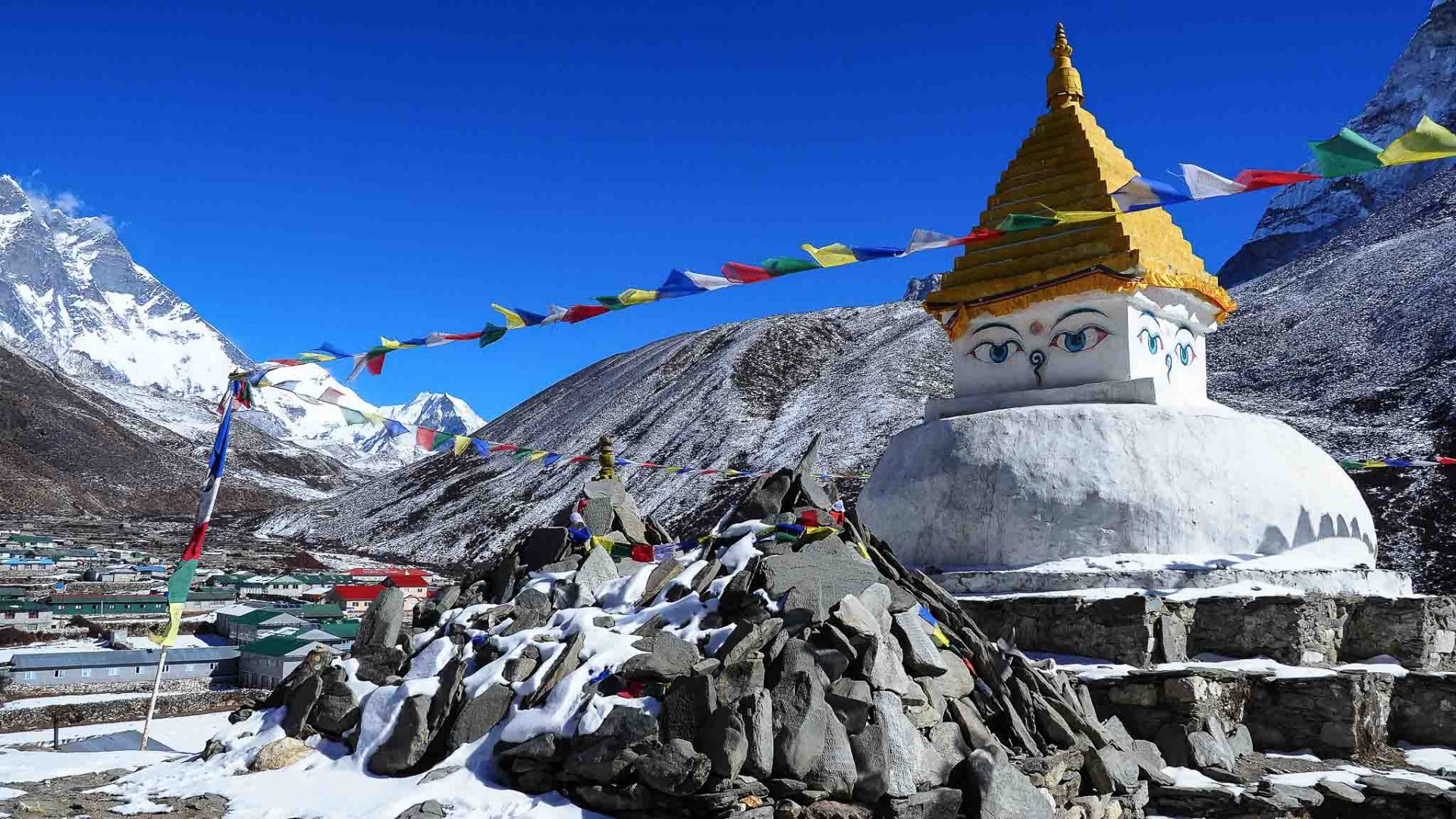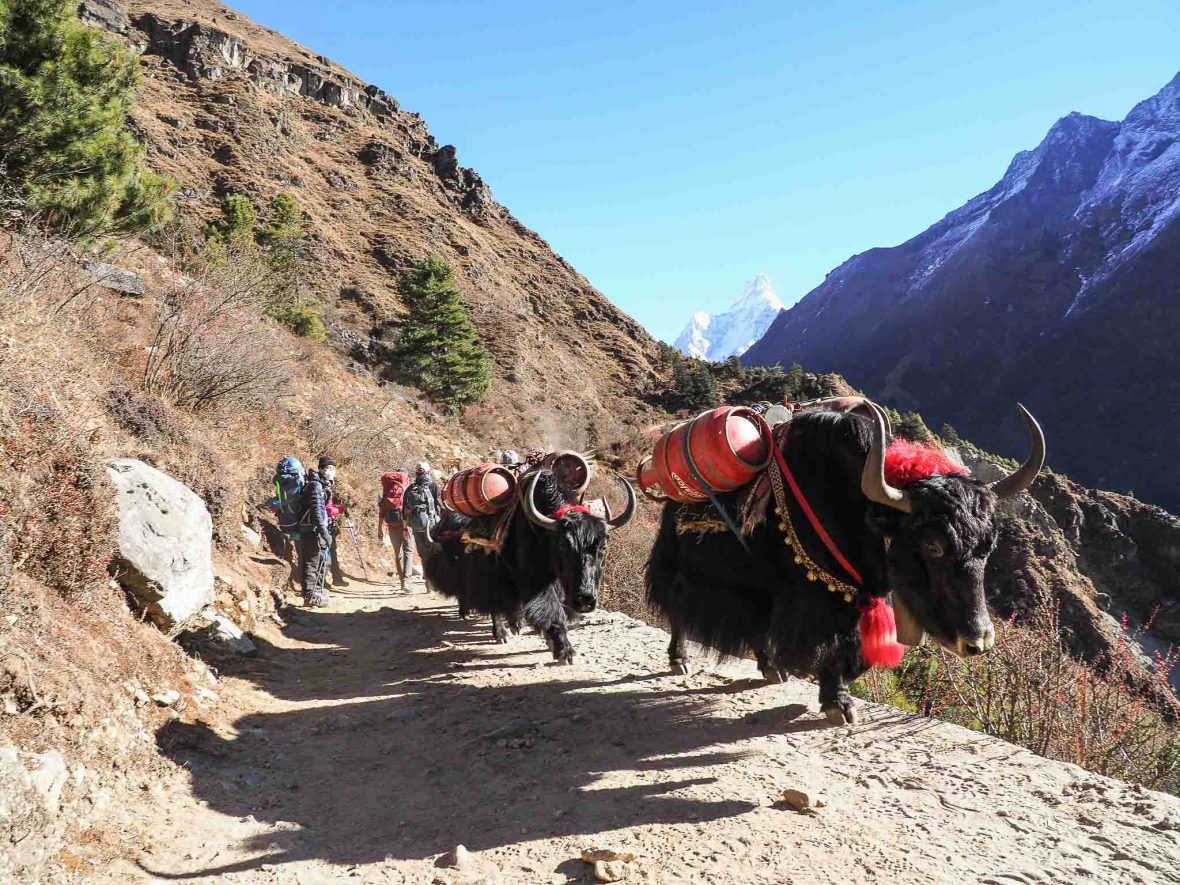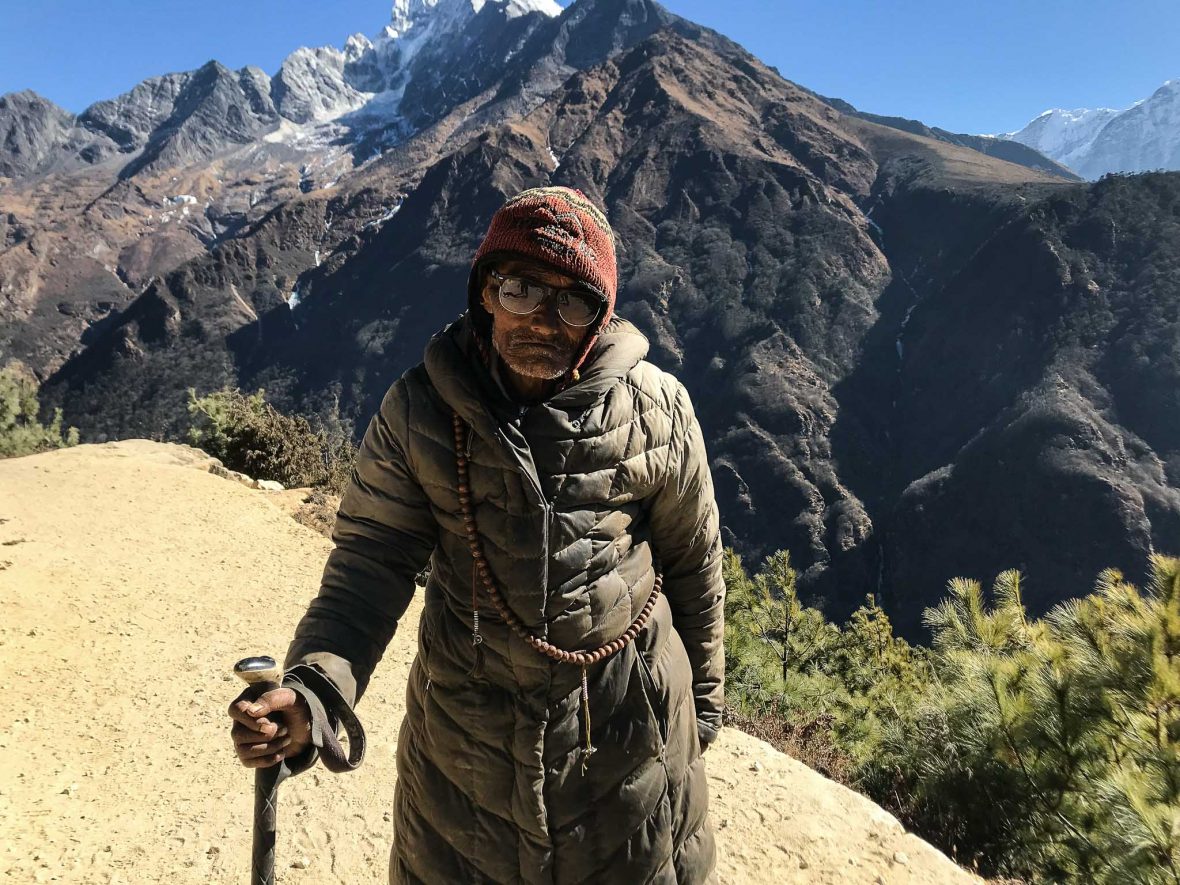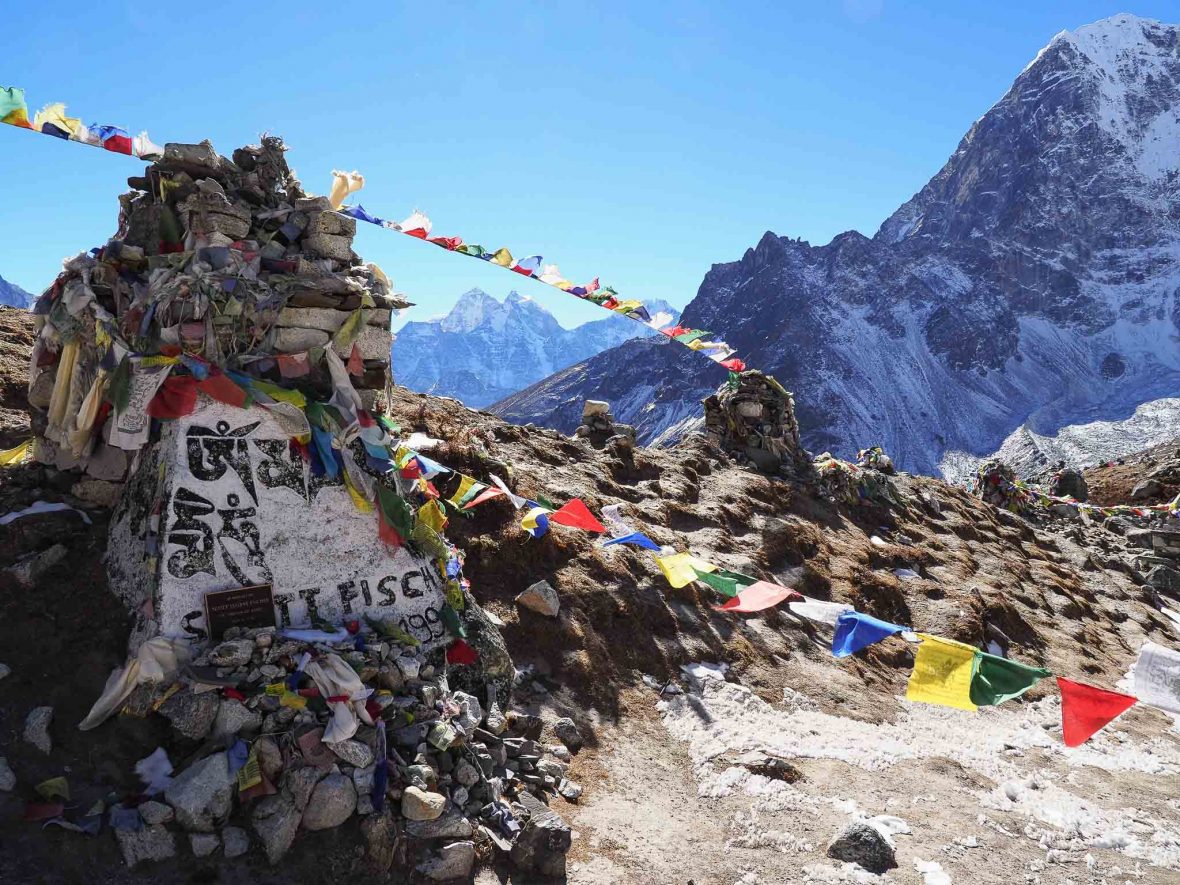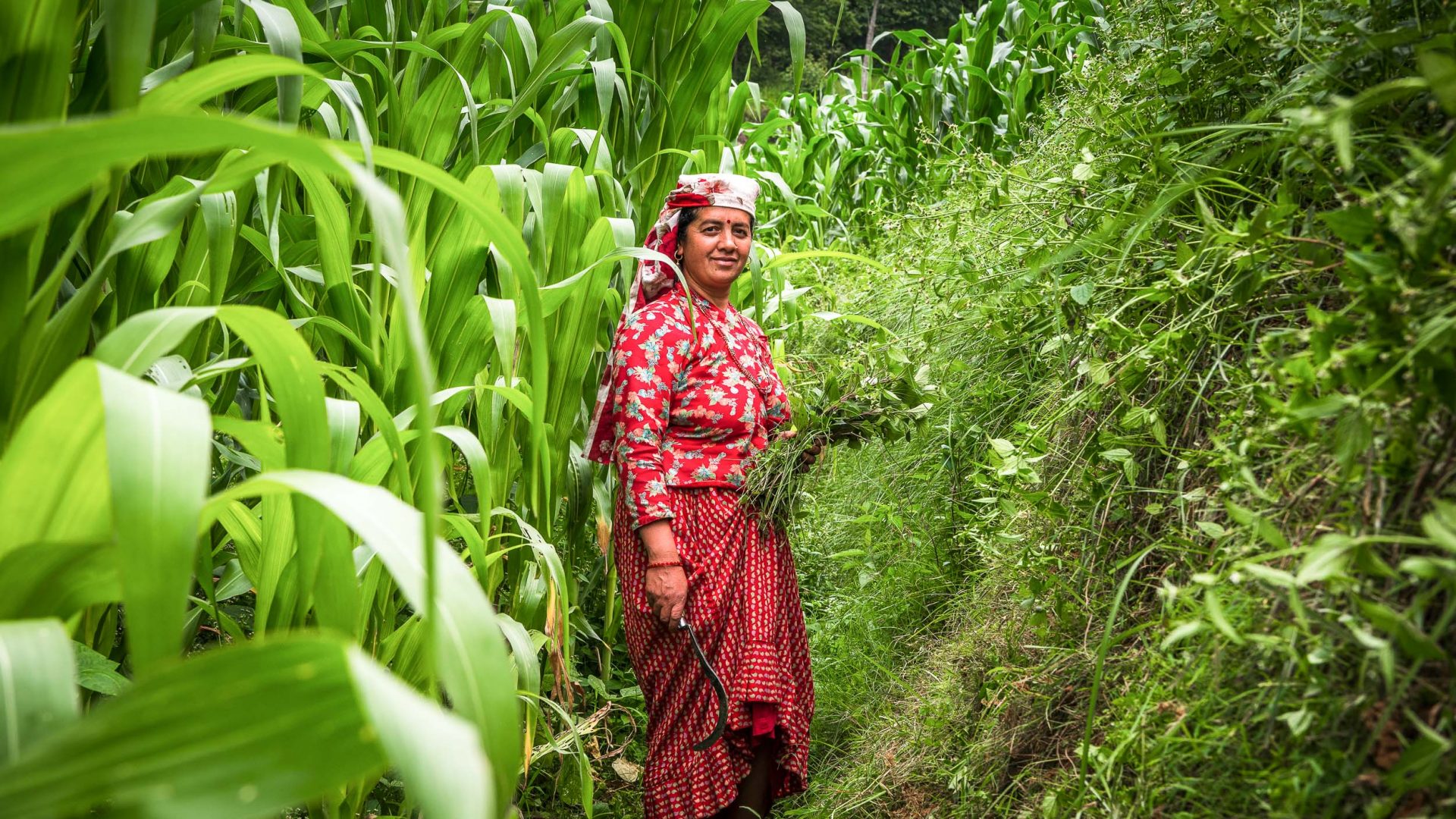Editor’s note: This article was published before the coronavirus pandemic, and may not reflect the current situation on the ground.
During high season, some 500 travelers head out on the Everest Base Camp trek every day. But has the famously stunning trek become a victim of its own popularity? Sarah Reid finds out.
Wiping the stream of snot off my face with my ski glove, I
take another labored breath, and will my legs forward.
At 5,000 meters (16,404 feet), where each breath takes in
50 per cent less oxygen than at sea level, every step feels like five. But I still
have a few hundred meters to go before reaching the summit of Kalar Patthar, a steep,
rocky ridge near Everest Base Camp that offers the best view of the world’s
highest peak you could hope to glimpse without climbing it. And I’m not going to
miss it for the world.
After getting a taste for hiking in the Himalayas during
a volunteer abroad program in Nepal in my high school days, I’d often thought
about returning to tackle Everest Base Camp (EBC). But in recent years, I started
to wonder if I’d left it too late.
Less than four years since the devastating earthquake that brought Nepal to its knees, tourism is absolutely booming. Nepal’s annual visitor numbers clocked one million for the first time in 2018, and the government hopes to see this figure double by 2020. But while it’s great to see the nation’s tourism industry back on its feet, is there room for us all in the mountains?
RELATED: Welcome to Africa’s secret summits
Like Mount Everest itself, which has reportedly become dangerously overcrowded in recent years, I’d heard rumors that the trekking route to Everest Base Camp was in danger of becoming a victim of its own popularity. With a whopping 500-odd tourists now hitting the trail every day during the high season (March to May and September to November), it sounded more like a hikers’ highway than a transformational trek.
But you never really know until you go, right? After taking a punt on December—which allegedly offers the best chances of avoiding the crowds before it gets really cold—I booked my first trip back to Nepal in 20 years.
But oh, what it worth it. Merely capped with snow for most of the year, the various peaks that loomed above the length of the trail resembled giant wedding cakes, their pure white icing oozing into the alpine meadows below. Hiking to a soundtrack of jingling yak bells, glacial streams gurgling under glittering plates of ice, and the dull rumble of avalanches echoing throughout the valley, never had the term ‘winter wonderland’ felt so apt.
At some points, hours would fly by without passing another tourist. And while teahouses tend to be rammed during the high season, I shared each of mine with only a handful of other hikers. Most were traveling in pairs or solo (some, like my husband and I, had booked a group tour and ended up with a private guide), which lent to a friendly, intimate atmosphere around the yak dung-fueled heaters each evening, transporting me back to the pre-smartphone travel era.
Even my guide Niraj Aryal admitted it was his favorite time of the year to lead EBC treks—a big call given guides and porters don’t tend to carry sleeping bags, and instead make do with the simple blankets provided in teahouses.
That’s not to say hiking in the low season doesn’t have its trade-offs. Many teahouses and other businesses (including the surprisingly good bakeries found in most villages) close during winter, and teahouses that do stay open turn off the taps to prevent the pipes from freezing (hint: Don’t forget baby wipes). The basic teahouse bedrooms are bone-chillingly cold, and hiking to EBC via Gokyo Lake and Cho La Pass (also known as the Everest Circuit Trek) can be risky without crampons. Likewise, rain, not to mention leeches, can hijack an expedition during the monsoonal months (mid-June to mid-August).
Regardless of the season, the EBC trek has also been described as lacking ‘culture’. But while it’s true that most ‘locals’ you’ll meet are workers from the lowlands (few traditional Sherpa people ever lived up here—the highest villages didn’t even exist until trekking tourism took off in the ‘50s), there’s plenty of culture.
You can barely walk a mile, for example, without passing a giant boulder etched with Buddhist prayers, and north of Namche Bazaar, you can expect to encounter at least one yak caravan every day. The Sherpa Culture Museum in Namche is well worth a look-in, and between Namche and Tengboche, you’re bound to meet Pasang Lama Sherpa, a local legend who spends his days collecting donations for trail maintenance.
If I had to draw one negative from the experience—aside from the relatively high food prices, which I can let slide, given almost all supplies are carried up from Lukla—it would be the constant buzz(kill) of helicopters evacuating trekkers from various points along the route. To be fair, most heli-vacs are conducted for legitimate cases of altitude sickness and injury, but a good handful of them are fraudulent.
RELATED: Is walking the most adventurous way to travel?
While Nepal has had some success clamping down on a scam in which hikers are pressured to take expensive flights off the mountain by dodgy guides on heli-operator payrolls, it’s not the only scam keeping travel insurers on their toes up here: I was shocked to witness several hikers in Gorekshep trying to wrangle insurable heli-vacs based on bogus health claims simply to avoid the hike out.
“We’re seeing more and more of this,” admitted Niraj. “People see the pictures on Instagram and think ‘I want to do that, too’ without properly assessing whether they can handle the challenge.”
Suffice to say, if you’re not prepared to give the 130-kilometer return journey your all, this is not the hike for you. While most people with a reasonable level of fitness will complete the trek comfortably—EBC has an estimated 90 per cent success rate—it’s hardly a cake walk: The trail has claimed eight lives this season alone.
Having had the privilege of undertaking some rockstar hikes in recent years—from summiting Mount Kilimanjaro to trekking several routes to Machu Picchu—I didn’t expect EBC to emerge as my new favorite. But here we are.
From the exquisite scenery to Niraj’s local knowledge and professionalism, the endless ginger teas to the friendships I made along the way, EBC was an incredible experience. I can’t speak for high-season departures, but if you’re game for a wintertime trek, I can vouch that the magic of the EBC trek is still very much intact.




